Last Updated on November 19, 2023 by Calvyn Ee
Key Points
- EV sales exceeded 300,000 units as per industry estimates, a 49.8 percent increase from the same period last year.
- EV outlook is looking grim as demand weakens, prices continue to fluctuate, and interest rates remain at alarmingly high levels.
- Reductions in EV investments and production slowdowns may have effects in 2024.
As reported by Cox Automotive, EV sales for the third quarter of 2023 have surpassed expectations, reaching a total of 313,086 units sold. This equals a 49.8 percent increase from the same period in 2022. Volvo, Nissan, Mercedes, and Hyundai saw particularly larger gains, going well over 200 percent thanks to new EV models introduced. This has led to EV sales making up 7.9 percent of total industry sales in Q3, compared to 7.2 percent in Q2.
Tesla’s price-cut strategy has helped keep sales healthy, growing by 19.5 percent year-over-year. However, its market share has plunged to 50 percent compared to its leading 62 percent in Q1 this year. Competition is ramping up as Rivian, Ford, Chevrolet, and other EV makers introduce newer EVs to the market.
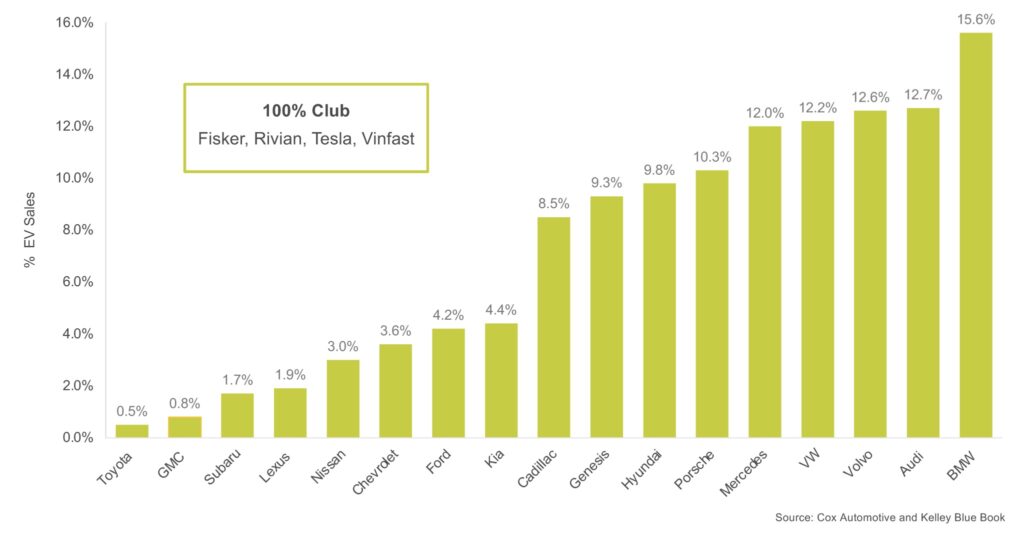
That being said, alarm bells are being rung over an impending slowdown in EV sales, fueled by continuing economic uncertainties, elevated auto loan rates, and weakening demand. Could the EV outlook be looking rocky in the lead-up to 2024?
Heading for Dire Straits?
A number of automakers have expressed concerns over this potential problem as they see weakening sales and revenues across the board. Ford and GM – still reeling from the UAW strikes – have taken steps to slow down EV production, while Tesla CEO Elon Musk is worried about the “high interest rate environment that we’re in” and how it will prevent consumers from buying an EV.
“People hesitate to buy a new car if there’s uncertainty in the economy… I don’t want to be going into top speed into uncertainty… [People] simply can’t afford [a car].”
Elon Musk, Tesla CEO
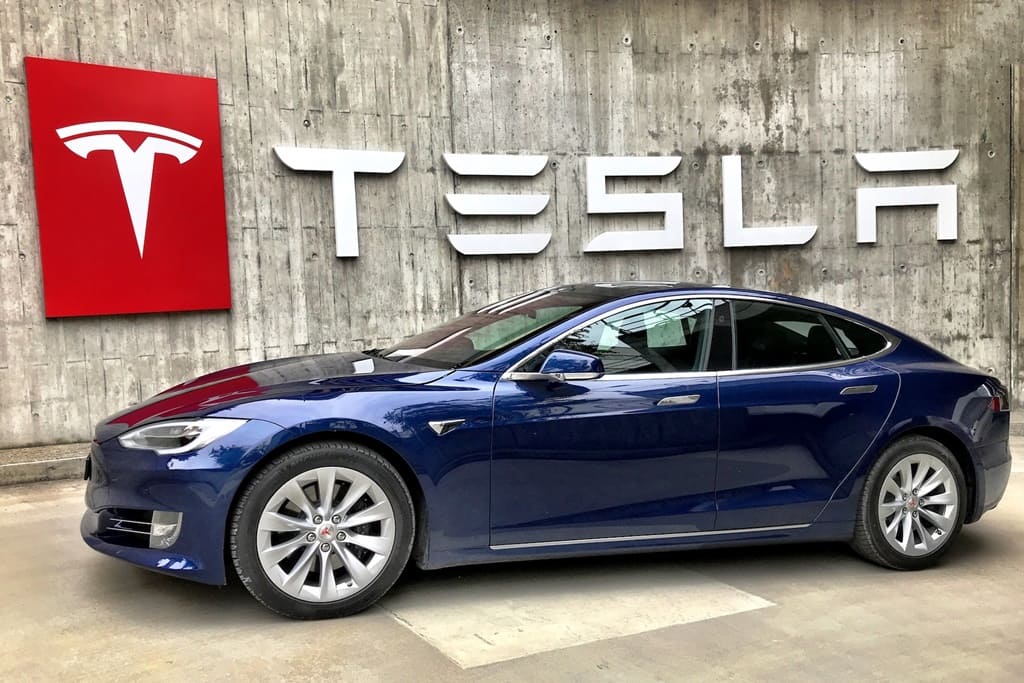
This slowdown has also caused raw material prices to soften, with lithium prices decreasing 67 percent while cobalt metal tumbled 20 percent this year. Meanwhile, other automakers have adjusted their expectations for Q4 as profit margins in Q3 weakened: Volkswagen was one such party, blaming the “negative effects for raw material hedges at the end of the third quarter.”
It’s a similar situation for other companies closely tied to the auto industry.
“Shares of Japan’s Nidec logged their biggest decline in a decade and a half on Tuesday, tumbling more than 10% on investor concerns over the motor manufacturer’s prospects in an increasingly tough Chinese market for EVs. The Japanese motor manufacturer now expects a 15 billion yen ($100 million) full-year loss at its key e-axle business [motors, gears and power-control electronics], rather than the profit it had previously seen.”
Reuters
Even CATL, the world’s biggest EV battery maker, is facing tough competition as its market share shrinks due to “smaller rivals and weakening demand” in China. Its closest competitors have slashed prices to draw in demand and have enjoyed accelerated growth over CATL, forcing CATL to follow suit “to secure its market share.”
While Tesla did pave the way with its surprising price cuts – which inevitably started a price war between rival automakers in order to secure consumer demand – this strategy won’t hold up for much longer if affordability issues continue. There’s still worry over the possibility of another interest rate hike before the end of 2023, and as it is, consumers are tightening their purse strings to be able to afford daily necessities over a new vehicle.
There are other motivating factors for this weakening EV outlook, as well.
- While EV sales have increased, much of it is driven by buyers looking to acquire an EV. Despite attractive incentives and the EV tax credits introduced with the 2022 Inflation Reduction Act (IRA), there’s still a majority of car owners who aren’t as convinced about EVs as a whole. Some dealerships have already complained that their EV supply has been sitting dormant for a long period of time.
- It will still take some convincing to get future car buyers to invest in an EV. Apart from the cost factor, much of it has to do with little awareness of the benefits an EV provides, the perceived high cost of maintenance, or a lack of EV infrastructure, such as charging stations. There are also car owners who prefer conventional internal combustion engine (ICE) vehicles.
- Despite some normalization in car prices, EVs are still expensive compared to ICE vehicles. The average transaction price for a BEV (battery electric vehicle) in September was $50,683, while the average used EV price is around $37,040 as of September. Used prices have dropped somewhat, but increasingly costly auto loan repayments are making it hard for potential buyers to commit.
- About 30 percent of used EVs “qualify for a $4,000 clean vehicle credit,” per Recurrent Auto, a used EV buy-and-sell platform. Per their research, more used EVs have been sold throughout 2023 than new ones – with the exceptions being the Tesla Model 3 and Y.
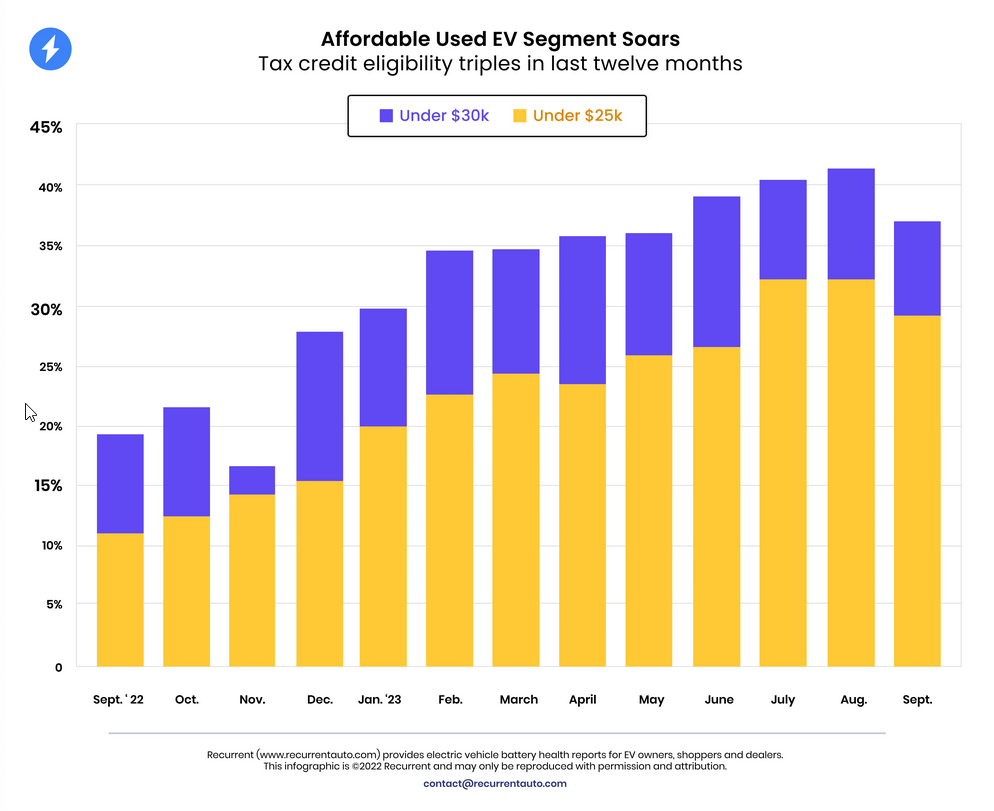
- A lot of investments have been made in order to drive new EV growth, including the construction of new factories and battery plants, and that is reflected in the current pricing of EVs. Is it unsustainable? We definitely think so. Price cuts have helped ameliorate the problem somewhat, but the slowing demand is inescapable.
An End to the Strike?
The UAW approved a tentative deal with Ford on Sunday, which provides a “pay hike of at least 30 [percent] for full-time workers and could more than double pay for others.” Ford’s olive branch is a potential sign that the strikes may finally come to an end. Besides that, there’s more good news for UAW members:
“In addition to the general wage hike, [UAW President Shawn] Fain said the lowest-paid temporary workers would see raises of more than 150 [percent] over the contract term and employees would reach top pay after three years. The union also won the right to strike over future plant closures…”
Reuters

In the wake of this announcement, the UAW has asked its striking members with Ford to “return to their jobs during the ratification process,” allowing Ford to resume production of its various models. Just recently, Stellantis has also reached a tentative deal with similar terms as Ford’s. While this does put pressure on GM, it does give both Ford and Stellantis some much-needed relief to get their EV production back on track.
Per the Anderson Economic Group, the “total economic loss” caused by the strikes has gone as high as $9.3 billion, a substantial sum in lost potential revenue. There’s still an opportunity to be had with what comes after the deal, but how much of an effect it’ll have – as well as what Ford may have in mind – on EV sales as a whole remains to be seen.
The Detroit Three has had fluctuating inventory levels during the strikes: Chevrolet and Cadillac inventories were below the industry average of 62 (indicating fairly good sales), while Ford hovered at 90 days’ supply (DS) in mid-October. Meanwhile, Stellantis’ brands were all “well above 100 days’ supply.”
The combination of the strikes and the slowing EV demand has also forced the Detroit Three to reduce their production capabilities, even as inventories are slowly improving. Still, Cox Automotive expects that new vehicle sales for October will still see some strength, with a seasonally adjusted annual rate (SAAR) of 15.8 million units, up from last month’s 15.7 million figure.
In the meantime, Ford has already postponed numerous investments, including slowing down the “construction of one of two joint-venture battery plants with South Korean manufacturer SK On.” GM and Stellantis have also moderated EV growth plans going forward.
“Given the dynamic EV environment, we are being judicious about our production and adjusting future capacity to better match market demand.”
John Lawler, Ford CFO
2024 might not see positive growth in EV demand if current economic trends continue, but it’s still a little too early to say if that will be the case. A moderating EV outlook could potentially bring good news as adoption slowly increases with growing awareness and improving infrastructure, on top of inventory returning to healthy levels and more incentives to make buying an EV a lot more tempting.

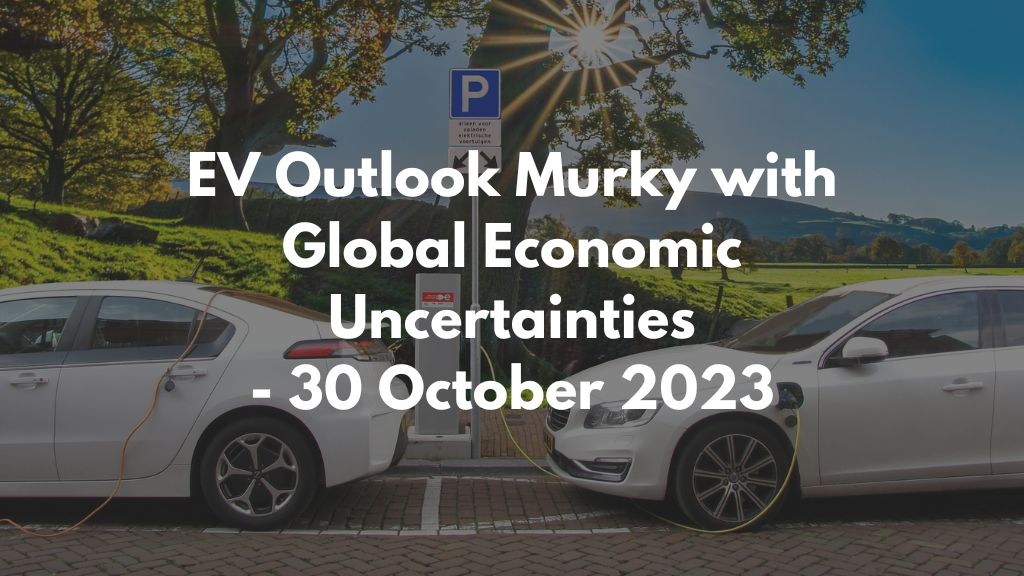
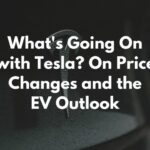

![The 5 Cheapest Electric SUVs Available Today [2023]](https://www.vinfreecheck.com/wp-content/uploads/2022/09/The-5-Cheapest-Electric-SUVs-Available-Today-2023-150x150.jpg)